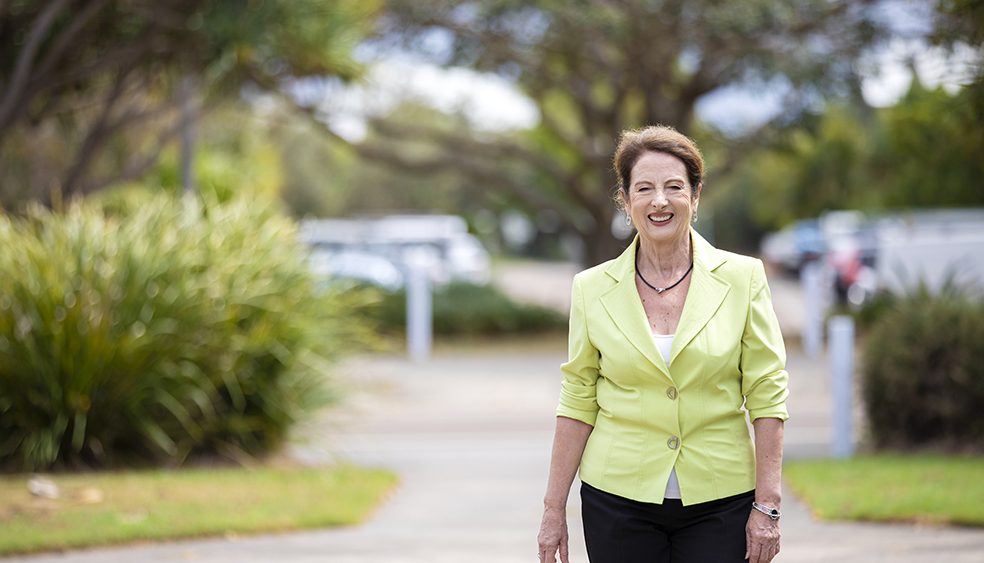FEDERAL BUDGET COMMENTARY
“The recent Federal Budget indicates that the Treasurer still believes Australia can avoid a recession, however there was a clear warning that there are tough times ahead — both for businesses and Australian households at large,” Ms Zubrinich said.
“While the Prime Minister suggests this budget fulfilled the ALP’s election promises, it unfortunately offers little hope, with people being poorer for at least the next two years and businesses having to operate in a less certain and risky environment.
“The five-point plan to tackle the cost of living through cheaper childcare, expanding paid parental leave, cheaper medicines, more affordable housing and getting wages moving again, whilst a bright spot, will take a few years to take effect and therefore won’t contribute to cost-of-living relief for some time to come.
Cost of living
“In reality, wage growth has been overtaken by inflation so real wage growth will be negligible at best out to 2024/25 at least. Interest rates will continue to rise which will negatively impact homeowners, as well as businesses funding debt to facilitate growth and even to operate their businesses day-to-day. It will likely slow innovation as well as deter investors in the housing market resulting in a flow-on effect for renters.
“In addition, we will see household savings reduce further as people dip into their savings to combat the increased cost of living further exacerbated by increasing gas and energy prices, projected to be up 40 per cent and 50 per cent respectively over the next two years.
“On the jobs front, we have 140,000 people expected to lose their jobs which will negatively impact tax receipts and be a further cost to the welfare budget as more people will require unemployment benefits.
“It is important to remember that according to the Poverty in Australia 2022 Report*, we already have around one in eight people and one in six children living in poverty in Australia. We therefore need to be careful of the unintended consequences of many of the budget’s measures, such as putting more people into poverty at a time when people have just struggled through two years of Covid and the mental health issues that has created, particularly for many of our less advantaged citizens.
Home owners
“The pressure on home owners will increase as interest rates continue to rise. According to the Australian Bureau of Statistics in 2021 there were nearly 9.8 million households in Australia (ABS 2022a), around one third of which are renters, a third are in the process of purchasing a home with a mortgage and one third who own their home outright.
“The impact of increased interest rates and decreasing property values is that even those who are lucky enough to own their home measure their wealth through their home value. If we don’t feel wealthy, we don’t spend and that’s not good for the economy, jobs and so on.
Education
“On a positive note, it is good to see delivery of fee-free TAFE places and additional university places for disadvantaged Australians, however it is as yet unclear as to what this will mean in terms of numbers for the Sunshine Coast.
“It’s also important to remember that as most apprenticeships and degrees take three to four years, those qualifying will enter the market in far tougher circumstances than the current 3.5 per cent unemployment rate.
Business
“Anyone who depends on their own enterprise is also worse off — not only thanks to interest rates and wage inflation, but through the proposed changes to industrial relations the Government have said are designed to boost wages through the enterprise bargaining process.
We have already heard several industry groups speaking out about the risks the proposed changes present, calling on the Government to seek more feedback before pushing legislation through. This seems a good idea.
We don’t need an industrial relations system that will impose further unnecessary costs on small business, in particular. Nor an industrial relation system that risks widespread industrial actions at a time when all governments should be focused on keeping the country from sliding into a recession. We have more than enough economic shocks impacting businesses at present.
Regional investment
“We also see the regions losing out in this budget, particularly in Queensland which took a funding hit for dam, road and rail projects. It has been confirmed that the $1.6 billion promised for the heavy rail line connecting the existing line at Beerwah to new stations in Caloundra, Kawana and Maroochydore along the CAMCOS corridor (renamed by the State Government as the Direct Sunshine Coast Line), has been retained in this budget. So, we now wait to see what the State’s planning for this project, already underway, will deliver when it is due sometime in 2023.
We also look forward to clarity around the reference in the budget papers to the 2032 Brisbane Olympic and Paralympic Games to support the preparation and hosting of the Games, and what it will mean for Sunshine Coast region. Clearly there will need to be major infrastructure investment by state and federal governments to support regional delivery partners. In the case of the Sunshine Coast, not only in road and rail infrastructure but also in the regional airport, and critical tourism, entertainment and sporting infrastructure.
“There is mention of $120b investment in transport infrastructure over the next 10 years so hopefully some of that will come our way on the Sunshine Coast. Not only are we dealing with our own expected population growth with southern states choosing to migrate to Queensland, but the higher annual national migration numbers of 195,000 per annum will place increased pressure on already stressed infrastructure.
“Finally, the $1.2b allocated for better connectivity for regional and rural Australia is of course welcomed. Any improvements to NBN connectivity through fibre access to homes and businesses is a win, particularly in growing regions across Australia.”



